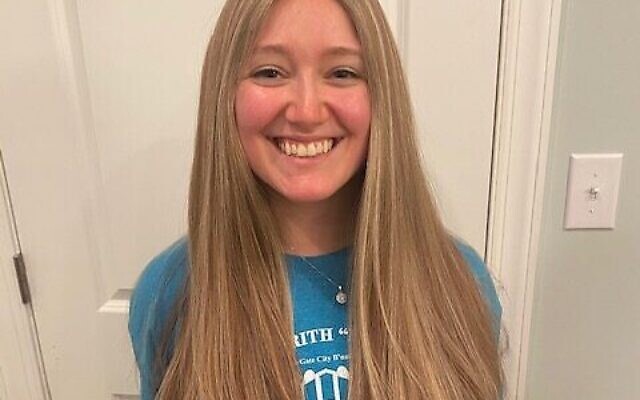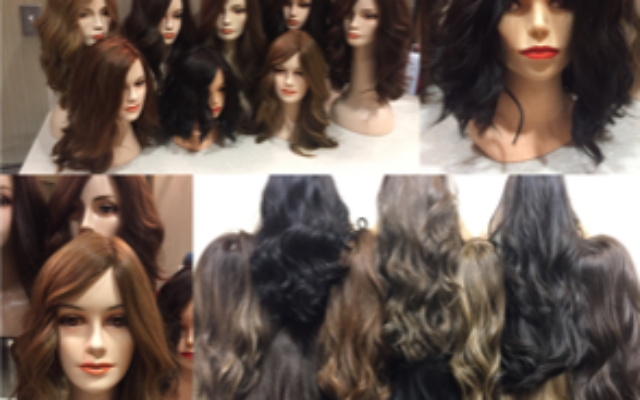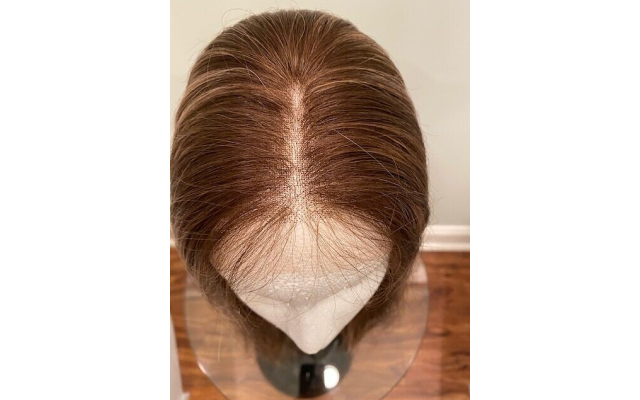Hair That Touches Hearts
Jennifer Green sells, customizes and styles wigs for the medical and religious women all with her special talent and caring ingredients.
After 37 years with the Atlanta Journal-Constitution and now with the AJT, , Jaffe’s focus is lifestyle, art, dining, fashion, and community events with emphasis on Jewish movers and shakers.
Jennifer Green is a legend in both the Orthodox and medical communities. A trained cosmetologist, she is known as an expert consultant to two important circles of wig-wearers. A graduate of the Greenfield Hebrew Academy, Green works with women facing medical challenges, as well as religious women who cover their natural hair for purposes of modesty.
The legendary Jewish hairdresser Vidal Sassoon once said, “Working with hair is architecture with a human element.” Green offers her clients multiple options consisting of synthetic, real, or blends. More importantly, she wants every client to end up with what’s prefect for them. Green’s client Tzippy Teller said, “When I was a teen, I went with my mom to get her wigs. She is patient and detail-oriented and wants you to be comfortable with what you buy, which is a rarity. She will do whatever it takes to make it perfect. I have bought from others, even out of state, who cannot match her level of service.”

Green, who originally apprenticed at a local salon that turned into a partnership, “No More Bad Hair Days,” fielded phone calls from churches and other sources to help women who were going through chemotherapy and other health challenges. Then she was recruited by Piedmont Hospital’s oncology department, where she opened a rent-free space as an official insurance provider to supply wigs for medical patients.
Green said, “Giving women with challenges their beauty back at affordable costs made me feel like I could save the world one relationship at a time.” After two years, she now operates “Hair with Care/DBA Jennifer’s Wigs,” out of her home and office, which focuses on both medical issues and sheitels for married women who choose to cover their hair.
Many modern Orthodox Jewish women practice the tradition of covering their hair after marriage, which comes from the Jewish laws of modesty. They are not only signaling modesty to others but also providing a constant reminder to themselves. Today, many wigs used by Jewish women come with a hechsher (kosher certification) in order to ensure that the hair is not sourced from rituals deemed to be idolatrous. This latest ruling comes after it was revealed in 2004 that the hair from a number of wigs came from Hindu women whose heads were shaved during a religious purification ceremony.

Green even makes time for clients on Sundays and evenings, and takes courses over Zoom to keep up with trends like advanced cutting techniques specific to wigs. She said, “There are so many choices: heat resistant, mixes of synthetic and real hair. Women need customization. Once in a while someone can walk in and find something perfect in stock in one appointment. Most of the time it takes 2-5 days after the consultation to get the wig I may need to cut and size. Human hair takes longer to arrive.” For up to 3 months, she will make adjustments at no charge.
Green also washes and sets wigs for around $40-$50. Synthetic wigs run from $300 to $750, blends from $800 to $1,400, and human hair comes in at around $1,600. Green notes that there are extra charges for natural red or “virgin” blonde shades.
Currently, Green’s business is more heavily slanted toward medical clients. In addition to chemotherapy, auto immune disorders, alopecia and children’s conditions can cause hair loss. Green, who also sells all types of accessories like scarves, hats, baseball caps with hair, halos, berets, beanies, and sleep caps, says, “The new craze now is a lace base which makes the wig almost undetectable. Women just want to feel good looking like themselves!”
- Marcia Caller Jaffe
- health & Wellness
- Community
- Jennifer Green
- Leah Gerendash
- Orthodox community
- medical community
- Wigs
- Greenfield Hebrew Academy
- Jewish hairdresser
- Vidal Sassoon
- Medical Challenges
- religious women
- Tzippy Teller
- No More Bad Hair Days
- Chemotherapy
- Insurance
- Piedmont Hospital’s oncology department
- Hair with Care/DBA Jennifer’s Wigs
- sheitels
- Modesty
- Married Woman
- Hindu Women
- hechsher
- heat resistant
- synthetic hair
- real hair
- Human Hair
- Synthetic wigs
- natural red
- blonde shades
- auto immune disorders
- alopecia
- conditions
- hair loss
- scarves
- hats
- baseball caps with hair
- halos
- berets
- beanies
- sleep caps








comments